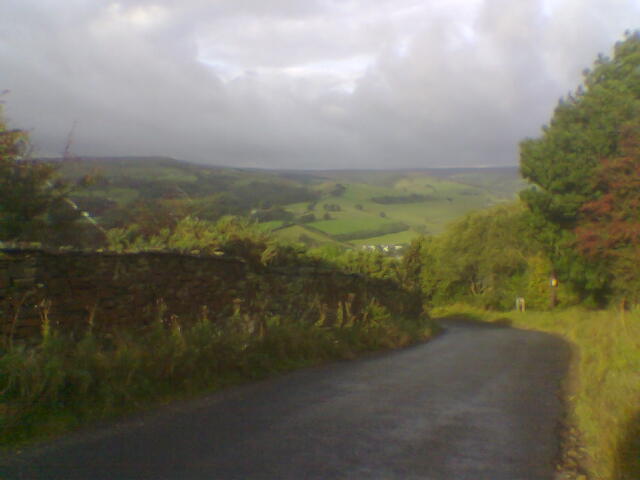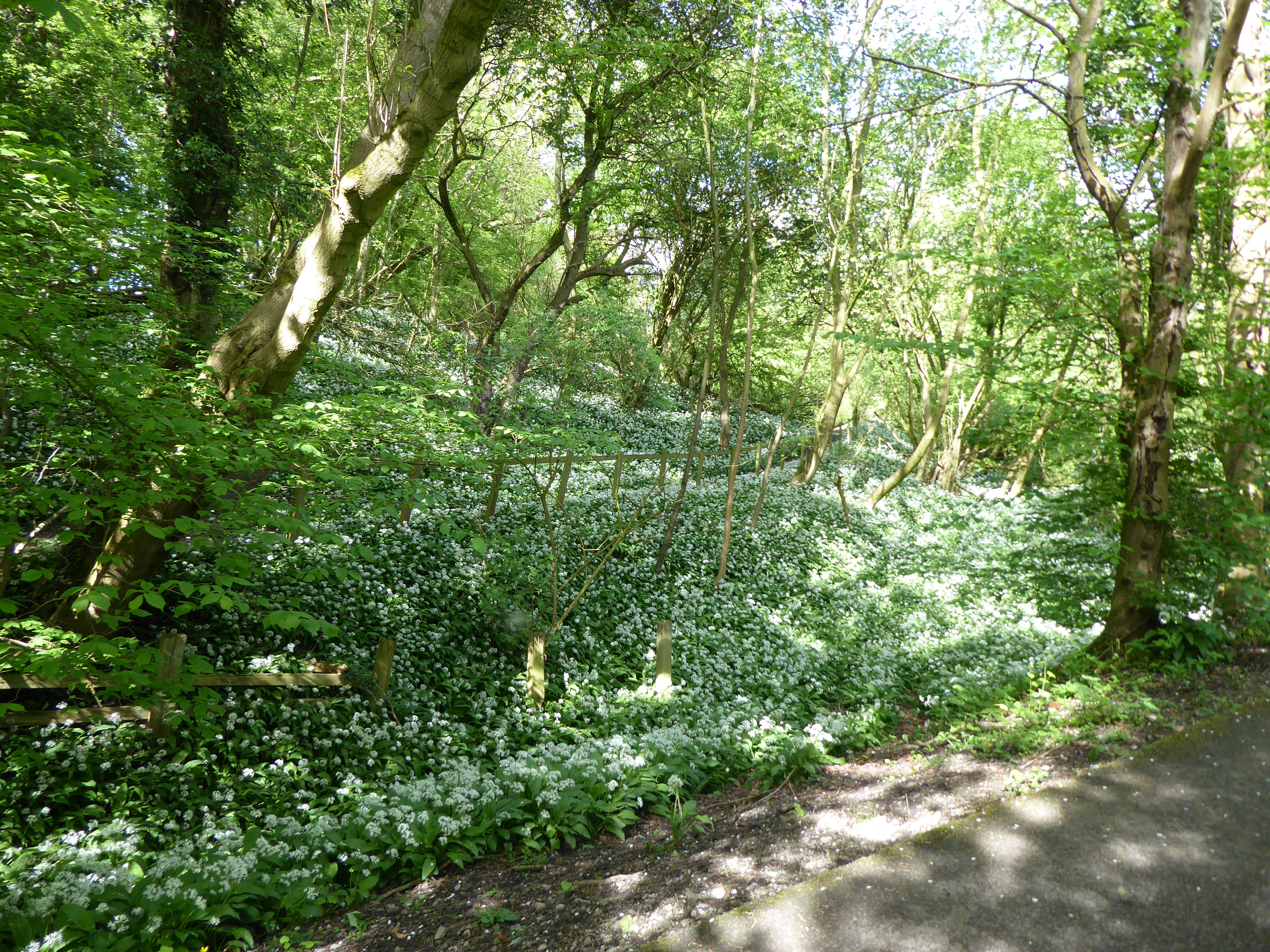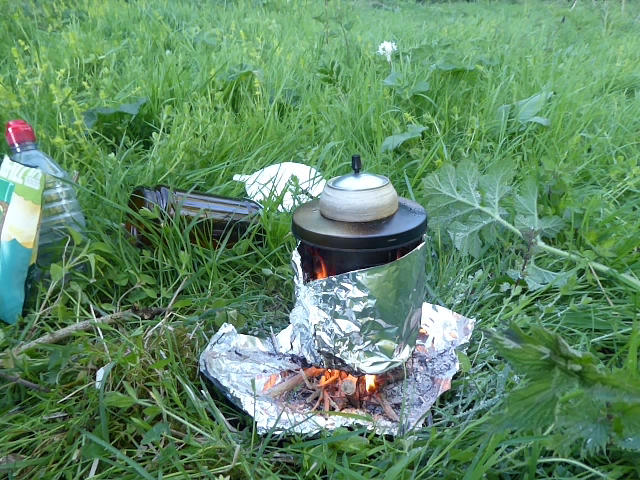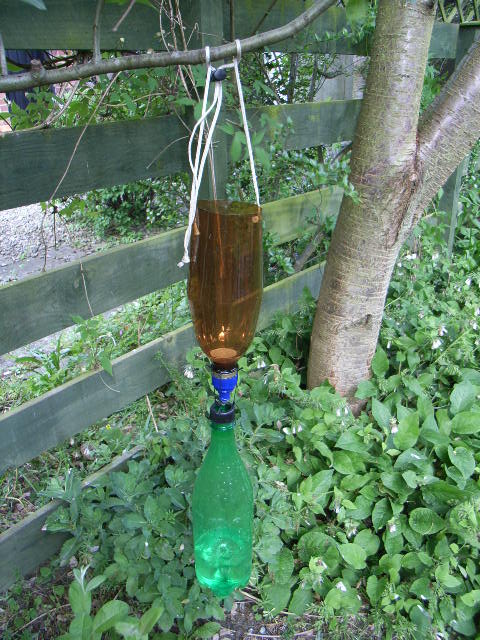
It was October 2007. I’d pitched in a shallow dip in the heather moorland for some shelter in case I should need some, but it didn’t look like I’d need it. As it turned out, I did and it didn’t provide much.
Now, in the small hours, I lay in my sleeping bag, listening to gusts of wind and rain advance across the moors from half a mile away before slamming into my little one-man tent, sending showers of cold water onto my face. It wasn’t raining in, it was condensation off the inside.
Until then, I’d had my head under the covers, but I’d heard something. I didn’t know what it was, a rustling in the heather next to me. Odd, to be able to hear little sounds like that over the noise of the rain and the flapping nylon. My senses were hyper-alert.
I hadn’t quite expected this. Either I didn’t pay enough attention to the weather forecast, or it had taken a surprising turn for the worse. Even more of a surprise was the level of fear I felt. I didn’t think there should be much of a challenge in this: get a bus to Pateley Bridge, hike up the hill, find a nice spot for a tent, cook, eat, have a decaf, sleep, go home in the morning.
As I lay awake, I began to recognise what was happening. It was almost as though there were two of me. It was just my “rational self” thinking this shouldn’t be a problem (I’d camped in storms before, I had a pretty strong tent, I’d checked the guys and pegs, it sounded worse than it felt outside, and there was probably little danger from man or beast). But another part of me – my “animal self” – had other ideas, or rather, it had raw emotions, and I had to think why I felt so scared.
First of all, this wasn’t a campsite, nor was it anywhere I’d been before. It was an unfamiliar bit of moorland, and my animal self, apparently, is alarmed at being away from home, especially trying to sleep in a storm. Worse, I was alone. I had only camped in a storm with other people, and I’d only camped alone on a regular campsite, surrounded by people.
I had a visceral lesson that night: my physiological response to unfamiliar circumstances, foul weather and isolation was automatic and fairly extreme. It bypassed my higher cognition. While I was awake, I spent most of the time taming this inner beast, reminding myself, “it’s just rain and wind”; “that was probably a mouse”; “there aren’t any wild beasts up here”; “I’m hidden enough from the road not to be seen by drunk thugs returning from the pub, who might amuse themselves by beating me up”; that kind of thing.

There were, of course, dangers. I’d not tested the tent before and it might fail if the weather got worse. I might then have to hold it round me all night for shelter, or head back to town and shelter in a doorway. Who knows, in the dark, I might stumble and injure myself trying to get down the hill. I didn’t know how cold I might get, or how cold I’d have to get to get hypothermia, fall asleep and not wake up. It seemed unlikely, but I didn’t have enough knowledge. There was a small but incalculable probability that a dangerous escaped animal might be living out here – the Beast of Pateley Moor – or just someone’s big dog gone feral. It was hard to stop trying to assess those virtually incalculable odds.
In reality, it probably wasn’t all that long before I calmed myself, and I got a few hours sleep, but it was an uncomfortable night and I was bloody glad when it was over. The storm had passed, and it was another nice day on the hill.

This was, as I said, my first solo wild camp – indeed, it was my first wild camp of any kind – and there were a lot of details to iron out.
I’m too independent. Where sensible people seek advice and guidance on a new hobby or sport from more experienced folk, maybe accompany them while they learn, I seem to want to invent the activity from scratch. It’s part of the fun, guessing how to do it, failing, figuring out why, trying something else, but sometimes I think I know better than the experts, or I just think I ought to know. Then again, sometimes I see an experienced practitioner doing it and copy that, only to discover I’m nowhere near fit enough or knowledgable enough.
This time, I had at least arrived and camped. On my first attempt, I walked too far, without a clear enough goal, carrying a ridiculous amount of gear (it looked like a normal pack the experienced walker carried), and didn’t stop to eat or drink enough. I finally collapsed in pain by the side of the road and phoned my partner for a lift home. Perhaps the main issue was that I was completely inexperienced in assessing the privacy and safety of a potential camping site, so kept on walking past places I’d now consider good enough.
I was probably still carrying rather too much weight on this second attempt, but I would have slimmed it down considerably by now, ditching my best camera, for instance, and making do with a phone that was ancient even then, (hence the poor quality of the photos). I’d set myself a shorter walk after a bus ride and was fairly sure there would be somewhere to pitch up here in the remoter parts of North Yorkshire. It still took me longer than expected to find a good spot, and I ended up in that less-than-ideal hollow (there was, in fact, a dry stone wall not far off, which would have provided much better shelter).
I soon shopped around for a new tent, after that. The Vango Ultralite is great for a warm, dry night, extremely easy to put up and takes up hardly any space, but it’s a single skin of nylon with integral floor, so it runs with condensation as soon as it’s cold, even with the vents fully open. I was sure there was as much water inside the tent as outside in the morning.
There is also, of course, no porch area to put wet gear outside the tent but out of the rain. At the last minute, I’d fashioned a makeshift porch with an old sheet for this trip so I had somewhere to put my pack and boots (not the best colour for camouflage, but I set it away from the road).

I splashed out a bit more to get my Terra Nova Laser Competition, with a more conventional design, an inner tent with mesh panels for ventilation, and a larger fly sheet to create a porch. I’ve not had a problem with condensation on some pretty cold nights, although, now I think of it, I don’t remember having much rainy weather at all after that first trip.
When choosing a camping stove, rather than following the herd and getting a standard gas one or using solid fuel or alcohol, I’d bought a crazy contraption that worked like an oversized cigarette lighter. You filled it just the same way, with butane from a can through a valve in the base. I thought that would be very convenient. It even had piezo-electric ignition. You just turned the knob and pressed the clicker and you’re cooking on gas. It was also cheap.
However, one problem with this design was that it had to be made of thick steel and brass to be safe enough, so it was pretty heavy. The other problem with it was that the plastic knob failed – that evening, thank you very much – and I didn’t have anything with me to fix it. So as the clouds gathered, after a longish hike, tired and cold, all I could eat on my first solo wild camp was cold food. I think I had some Brazil nuts, and maybe a snack bar or something.

I had a signal and rang to let my other half know I was okay before I settled down. It was too far to ask her to come and pick me up, for sure, but I’d certainly thought about whether I could get down to Pateley Bridge before the last bus left for Harrogate.
Solo wild camping isn’t SAS training. It’s not bungee jumping off a bridge or swimming with sharks. I’m sure there are scarier rides at Alton Towers. But it has elements of the same kind of challenge, getting outside our comfort zone, facing some of our personal demons, and there are real and serious dangers. The traveling can be exhausting, especially on a hot day, and you have to deal with whatever the weather throws at you. You have to keep yourself safe, knowing that every decision is just yours to make. A phone, or the signal, can fail at any time, and a false step in a remote spot can lead to a twisted ankle, a broken bone, or even death, if help can’t be summoned.
Now, as I’ve said before, I don’t do a lot of this wild-camping lark. So far my trips have averaged less than one a year. That must have slowed down the learning process a great deal, but I do feel much more competent now, and much better prepared, and my pack is significantly lighter too.
There is still a lot to get right about cooking at camp. I haven’t yet had to light my stove when it’s raining, for instance. That’s something I intend to change. I now burn sticks in a tin-can stove, so obviously there are bigger challenges in wet weather than if I took a gas stove – finding dry sticks, keeping them dry, and sheltering the stove from the wind and rain. But dry wood can be found. I’ve watched videos and understand the theory. It can even be done with a spark from flint and steel, and I use a lighter or matches and a bit of something like wax, so I’ve got a head start there. I’ve made a light-weight cloth shelter to protect the stove from rain, which should be adequately fireproof as it’ll be used damp anyway. But theory isn’t the same as practice.
There’s a good deal of rain coming, so I should have opportunity to try it out. I’m intending to camp in the back garden for a while (again, something the sensible person would do from the start). I’ve just got some warmer bedding, too, so I can do some camping in the colder months, when I’ll have more time for it (summer just seems too busy with everything else). I hadn’t intended cooking al fresco in the garden, just going out to sleep in the tent and keeping notes on the temperature it gets down to, but I should probably try to make a hot meal in the rain too.
I won’t be worried about much out in the garden. I guess a neighbour’s cat might spray the tent I just cleaned and re-proofed, and there’s a rather over-friendly one next door might try to get in with me!
Thanks for reading – take care out there guys!



















